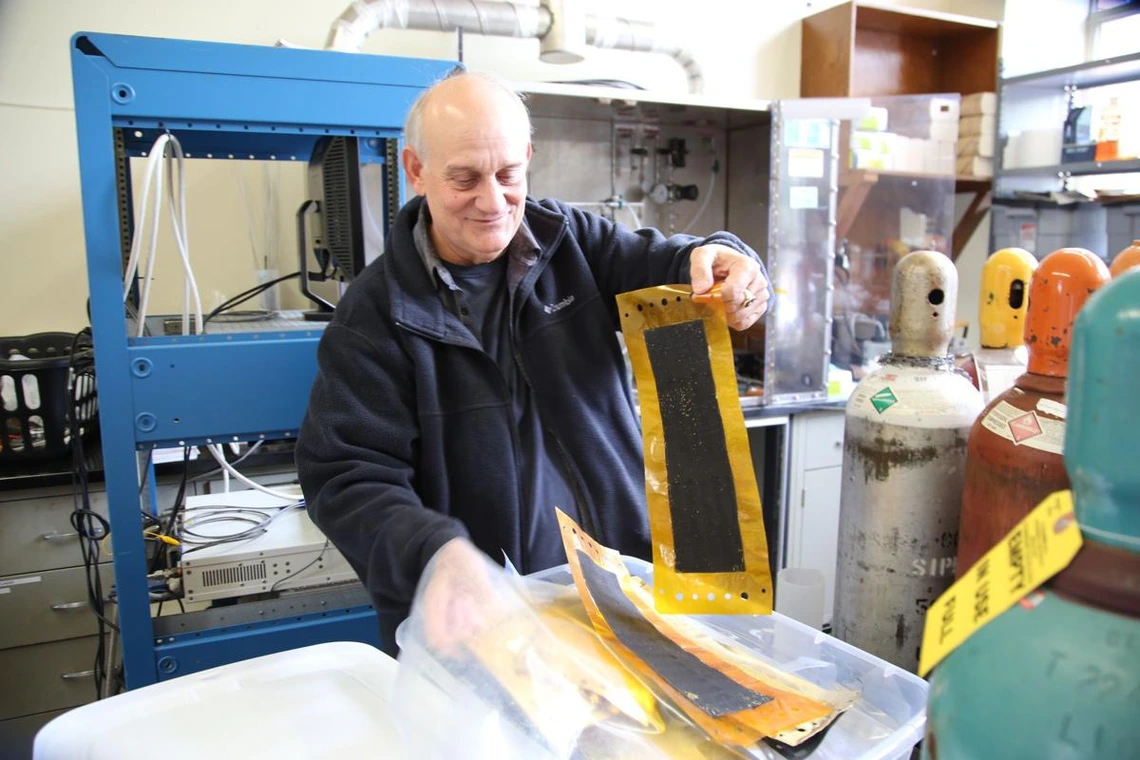University of Arizona Professor Advances New Fuel-Cell Technology
Dominic Gervasio is working with Tech Launch Arizona to commercialize a smaller, lighter fuel cell that can operate at high temperatures without using water.

Dominic Gervasio, associate engineering professor at the University of Arizona, holds composite membranes used to test technology for fuel cells that can operate at high temperatures. Major aircraft suppliers have reportedly expressed interest. (Photo: Paul Tumarkin/Tech Launch Arizona)
Hydrogen fuel cells have been in limited commercial use for decades, but their wide adoption has been hampered by high costs and technical issues.
Now a University of Arizona professor is working to commercialize a new type of polymer electrolyte fuel cell that can operate at high temperature without the need for water.
Dominic Gervasio, a professor in the Department of Chemical and Environmental Engineering, is working with Tech Launch Arizona, the UA’s technology commercialization arm, to patent and potentially license the technology.
Fuel cells generate electricity via a chemical reaction using hydrogen. They consist of plates of various materials that create the reaction.
The new fuel-cell technology could be used in autos, or for remote or emergency power generation, but one of the chief beneficiaries is expected be the aircraft industry, where limiting size and weight is crucial, Gervasio said.
“The people in the aerospace industry want these fuel cells to improve the efficiency of their aircraft,” said Gervasio.

